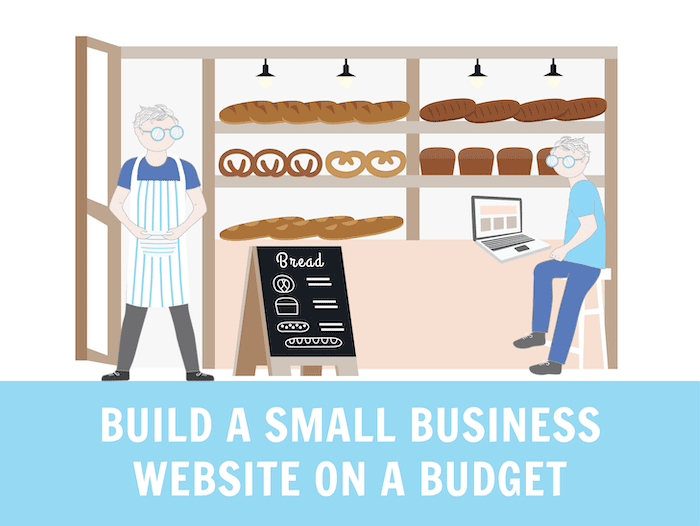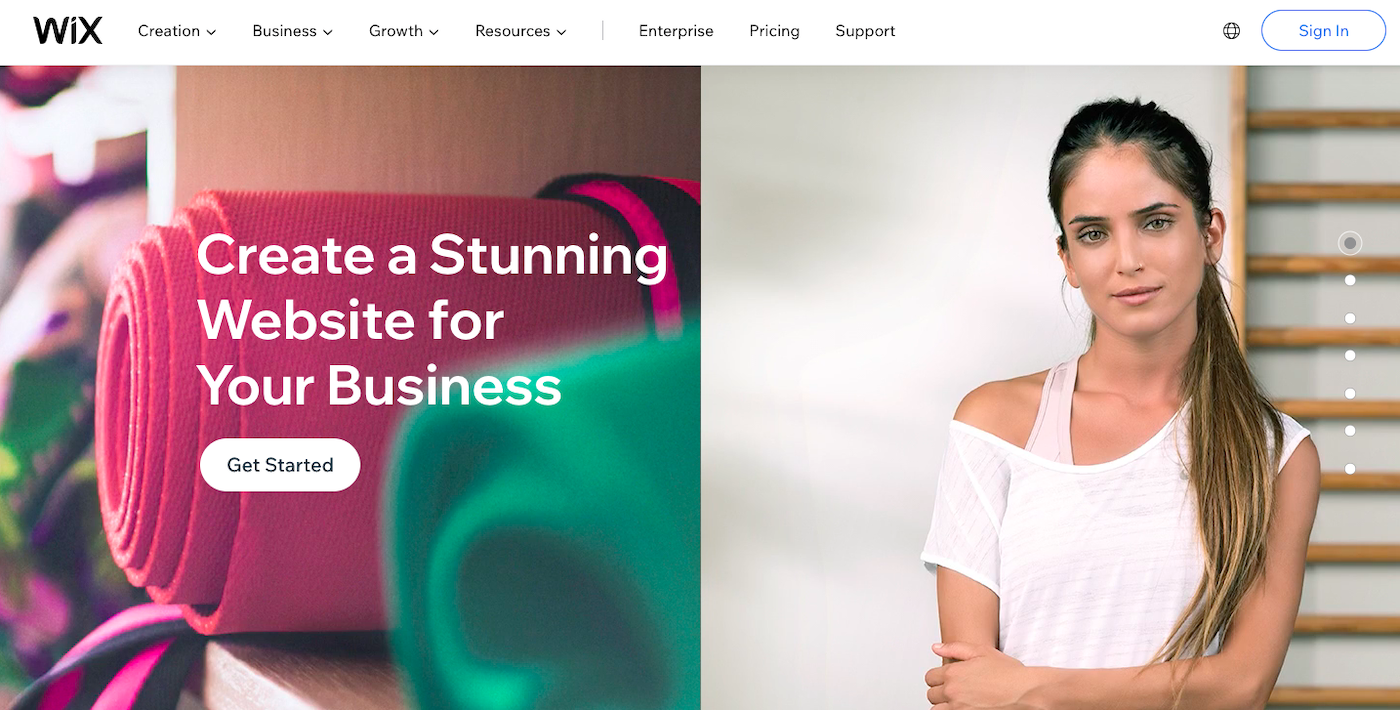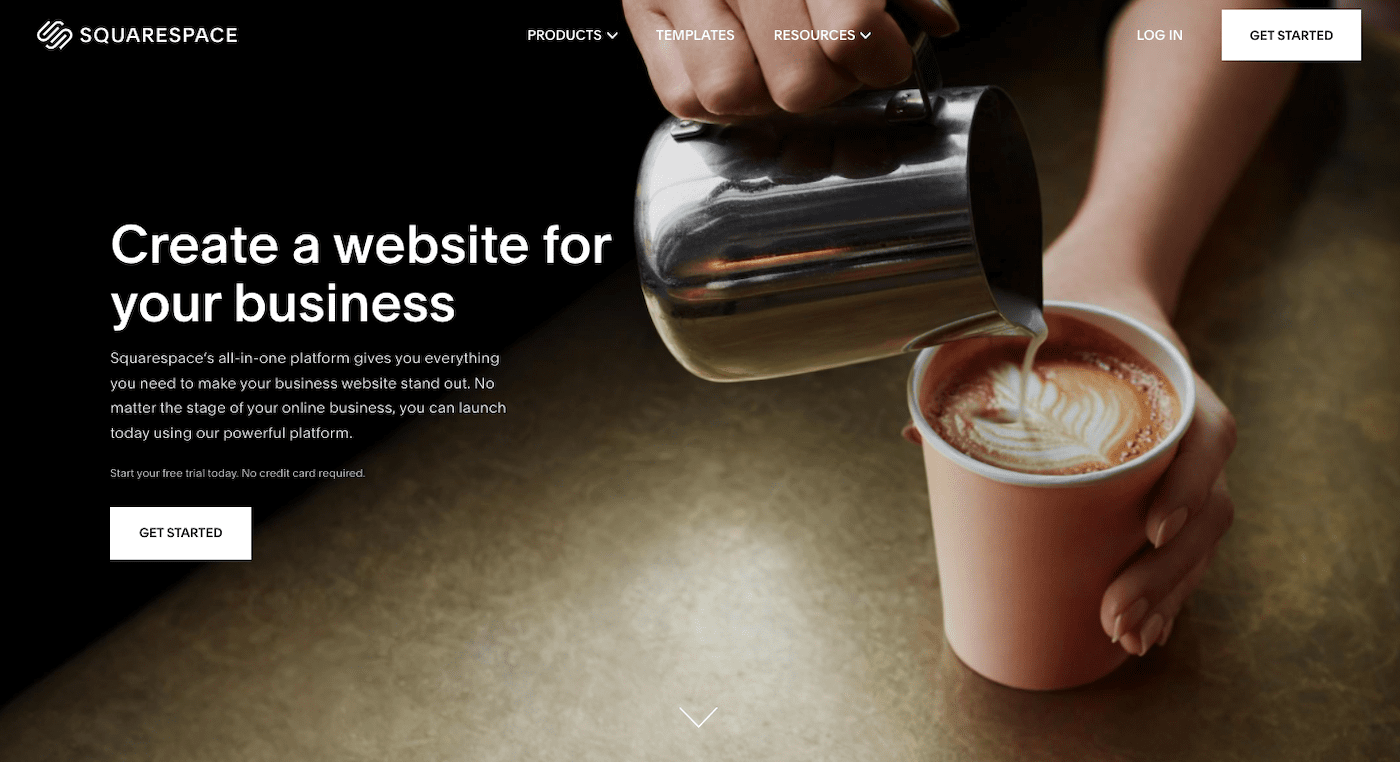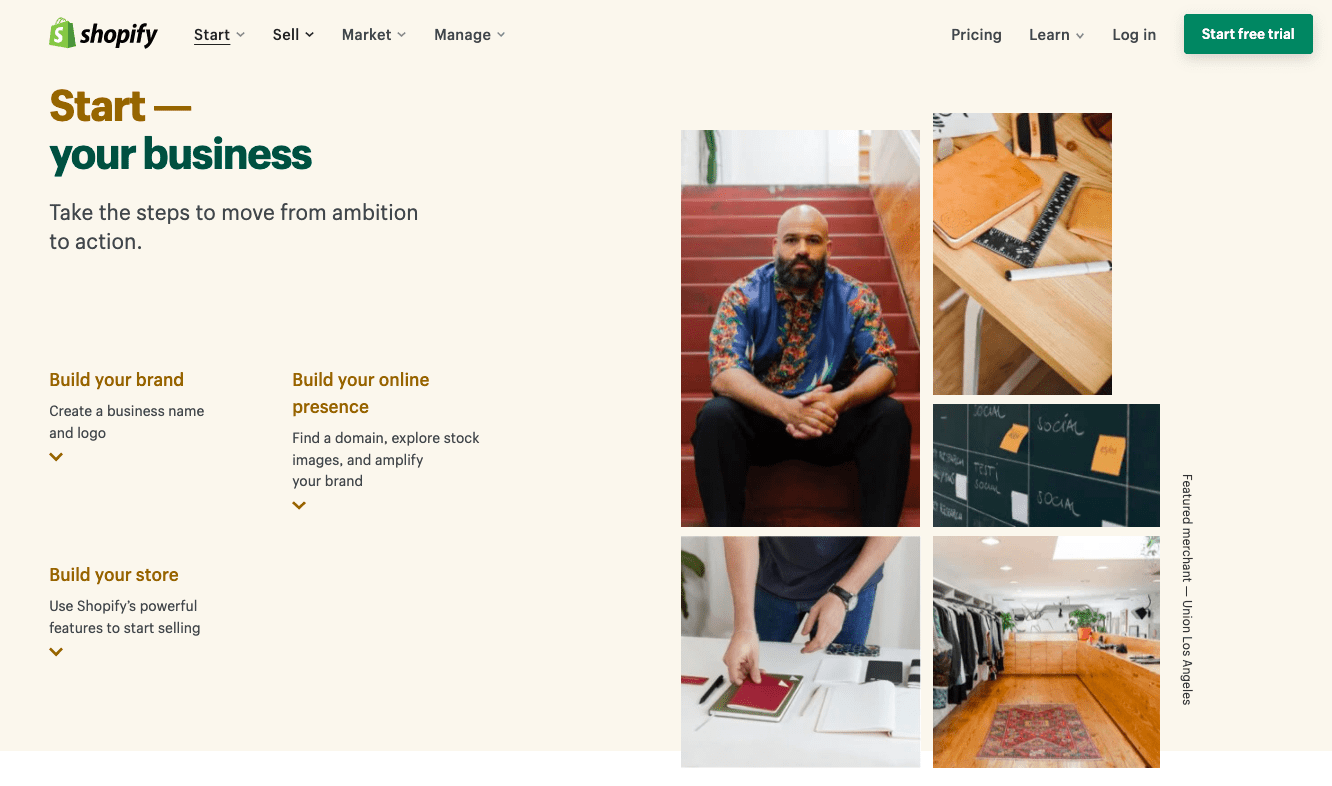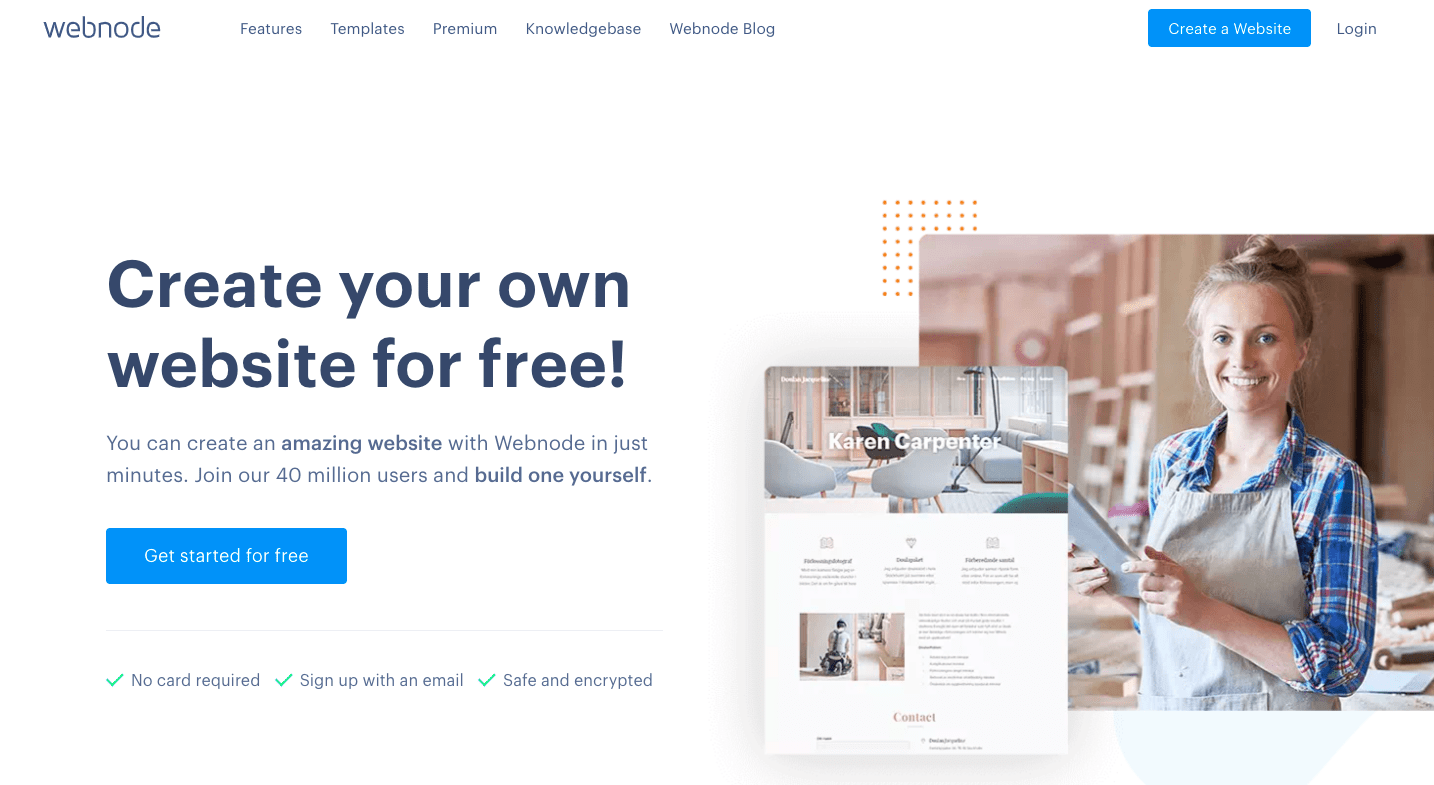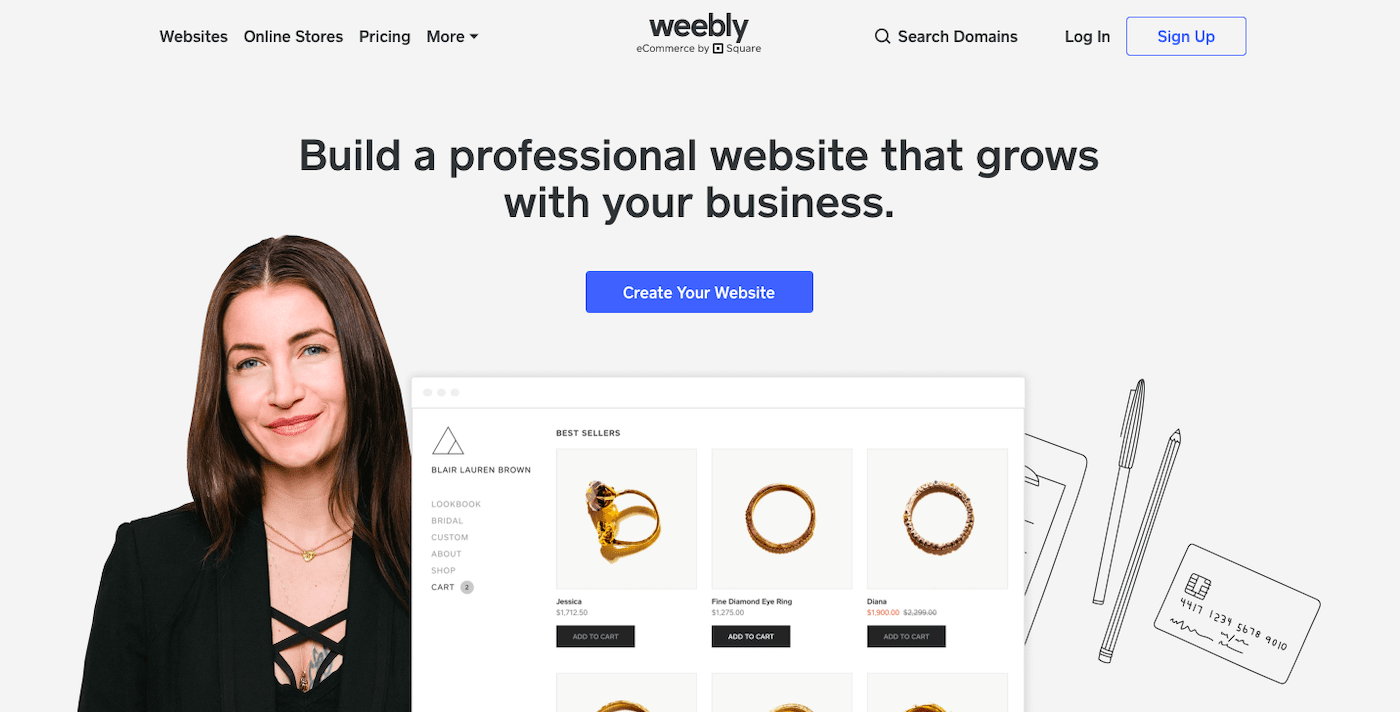Tooltester is supported by readers like yourself. We may earn an affiliate commission when you purchase through our links, which enables us to offer our research for free.
Just come up with an exciting new idea for a small business or side hustle?
Or, been in the small business game for a while, and thinking about how to take the next big step of moving your business online?
First of all – congratulations! As a small business ourselves (we currently have 10 members and work out of a sunny office in beautiful Barcelona), we know the thrill of creating a shiny new website that has the potential to reach the whole world.

Our own small business – Tooltester 🙂
And, after building 7(!) of our own websites, we also know the challenges that come with it.
Some of the problems we encountered (and eventually overcame) included:
- Creating a website on a limited budget
- Building a site without extensive technical knowledge
- Finding the right solution that met all our needs
- Designing a website that looked great and was intuitive to use
- Getting found by visitors on Google
That’s why we want to share our learnings and help you create a small business website, in the fastest and easiest way possible.
In this guide, you’ll learn:
- The different options for building a small business website (and why we strongly recommend using a website builder!)
- The best website builder for your business’s specific needs
- Our top tips for optimizing your site and getting greater visibility on Google
- The other essential things you need to consider before your site goes live
So, let’s get started!
Creating your affordable small business website in 8 steps
Creating your professional website all boils down to these 8 key steps, which we’ll go through in this guide:
- Identify the features you need for your site
- Choose the best way to create your site (code from scratch, build using a content management system, or do it yourself using a website builder)
- If you decide to go for a website builder – choose the best one for your needs
- Design your site
- Create your content (following SEO best practices)
- Get ready to go live – get your domain, email, and analytics set up
- Cover your legal bases, and publish your site!
- Update regularly (for example, with new blog articles or products)
We expand on each of these points in much more detail in our free ebook – feel free to download it if you’d like to dive in deeper.
1. Identify the features you need for your site
Websites, like businesses, come in all shapes and sizes.
Your website might be as simple as a single-page site displaying your contact details, or as complex as an online store with customer logins and members-only subscription content.
Your needs will vary depending on the type of business you’re running. A budding architecture firm that wants to showcase its portfolio and generate inquiries would need a very different website to a busy restaurant that wants to display its menu and take online reservations, for example.
So, the first step in creating a small business website is to identify what features your website will need.
Here’s a checklist you can use. You might only need 1 or 2 of these features, or you might need all of them.
Regardless of how many you need, I promise that we can help you find the right solution!
Checklist of website features:
- Online store to let customers purchase physical or digital products (or even subscriptions) through your website
- Booking form to let customers schedule appointments or book classes (also see the following guide if you need this feature: The best website builder for a service business)
- Reservation form if you run a restaurant or hotel, and want to accept reservations online
- Contact form for collecting customer inquiries
- Newsletter sign up form to let visitors receive email updates (e.g. via Mailchimp or ActiveCampaign)
- Google Map to help customers get to your shop, restaurant or office (if you have a brick and mortar store)
- Blog for publishing content and attracting new visitors via search engine optimization (don’t worry if you don’t know too much about this yet – we’ll cover it in more detail down below)
- Members area to allow customers to access exclusive content (paid or free)
- Multilingual sites to display translations, if you’re serving an international/multilingual market
- Social media links to connect to Facebook, Instagram, Twitter, TikTok, LinkedIn, or another social media site
- Media that can be accessed directly through the site – for example, videos, audio, or a podcast
- Portfolio pages if you are in a design industry (e.g. graphic design, photography, architecture) and need to be able to display your work
While these features may sound pretty advanced, the good news is that there are a few solutions that allow you to add these to your site, in a very simple manner.
Which takes us to our next topic…
2. Decide how to build your website
As you’re probably aware, there are a few different ways to build your own website. In a nutshell, they are:
- Hire a developer to build your site from scratch
- Build your site using a content management system like WordPress (and a little help from a developer)
- Do it all yourself using a website builder like Wix, Squarespace or Shopify
Let’s dive deeper into each option.
1. Code your site from scratch
The first option, starting from scratch, is the most expensive. But, it’s the only option if you need a more complex website.
By this, we mean one that might be used as a mobile app, an interactive site (e.g. an online game), or a social media platform.
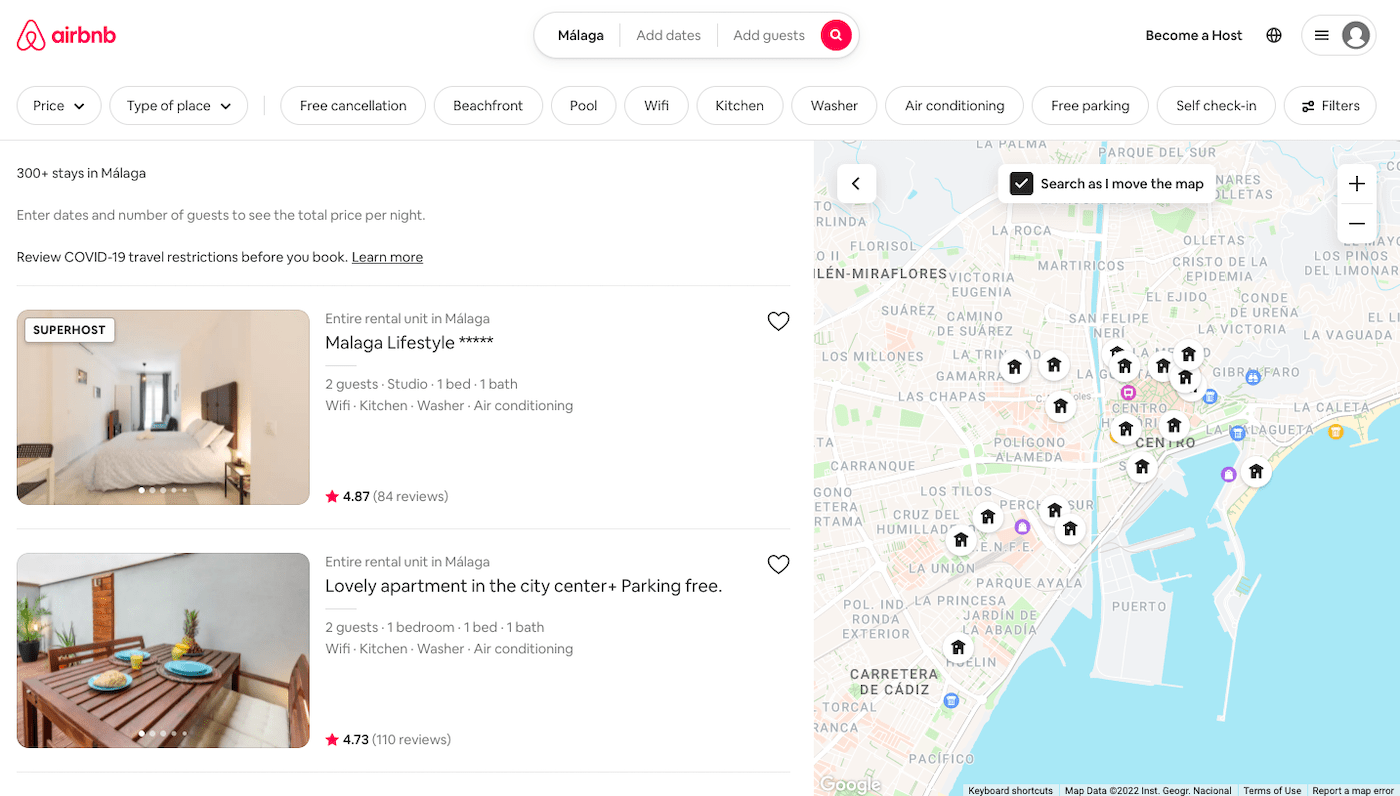
Unless you’re trying to launch the next Airbnb, you probably won’t need to code your site from scratch
But if you’re here, you’re probably not trying to create this kind of site. Instead, you’re probably looking for the simplest way to create a small business website, without needing to involve a developer.
That’s where the second and third options come in. Let’s take a look at #2 first.
2. Use a content management system (CMS)
WordPress is a powerful content management system that, for the most part, isn’t overly difficult to use – see our WordPress tutorial here. Its greatest advantage is its flexibility. With access to thousands of plugins, it’s easy to enhance any WordPress website and make it do… pretty much anything.

Some of the world’s biggest websites use WordPress – but does yours really need it?
There are other content management systems too. You might have heard names like Drupal and Joomla, although they’re not as popular as they used to be (WordPress’s market share in the CMS market is 62% – that should give you an idea of how widely used it is!).
But the main disadvantage of a CMS like WordPress is the amount of work that you have to put into setting up and maintaining your website.
You’ll need to take care of things like finding a web hosting provider (making sure their reliability and website loading times are up to scratch) , managing security, and keeping plugins up to date.
And more than likely, you’ll also need the help of a designer and developer to get your site up and running, because CMSs like WordPress don’t offer support directly.
Not exactly the simplest solution, right?
That’s why we’re such big fans of option #3 – using a website builder.
3. Use a website builder
Website builders are designed to be an all-in-one solution. They take care of everything to do with creating and running a professional website.

A real small business website, Acupuncture with Fabi, created with Wix. It lets customers make bookings online
With a website builder, you won’t have to worry about things like web hosting or security – they’re covered as part of the subscription fee (which you can usually pay yearly or monthly).
If you pay a little extra, they’ll even take care of things like domain name and email accounts.
But perhaps the best part of a website builder is how easy it is to use. All of them let you start with a template, which you can then edit using a visual editor.
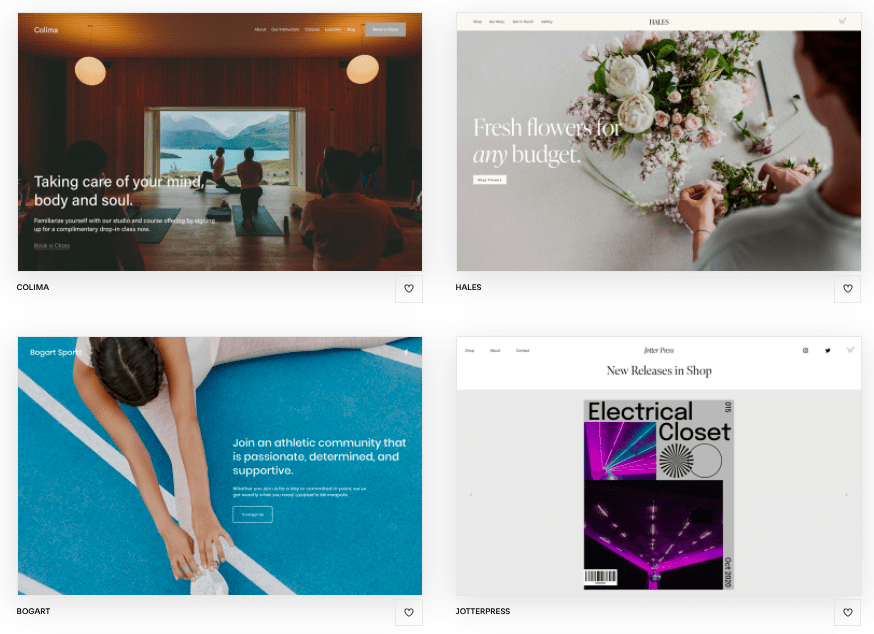
A few of Squarespace’s small business templates
Some (like Wix) even use drag and drop editors which let you move text, images and other elements around and place them wherever you like, giving you full control over your website’s design – without the need for any coding.
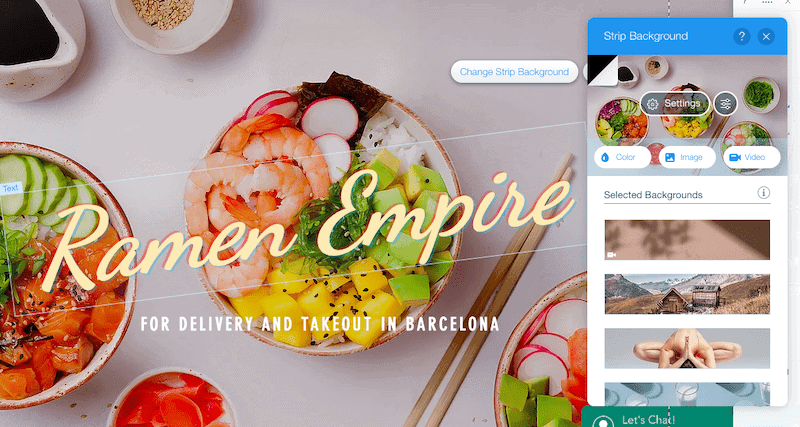
Making changes with Wix’s intuitive editor
And what about those extra features we mentioned earlier – online stores, blogs, and booking forms, for example?
Well, most website builders have these built into the tool – meaning they can be easily enabled with just a click.
In fact, all website builders come with the following features as standard:
- Blog
- Contact form
- The ability to embed images and video
- Displaying a map (e.g. Google Maps)
And if there’s something you need that’s not built into the tool, chances are you’ll be able to add it using a third-party app, which can be quickly integrated with your site.
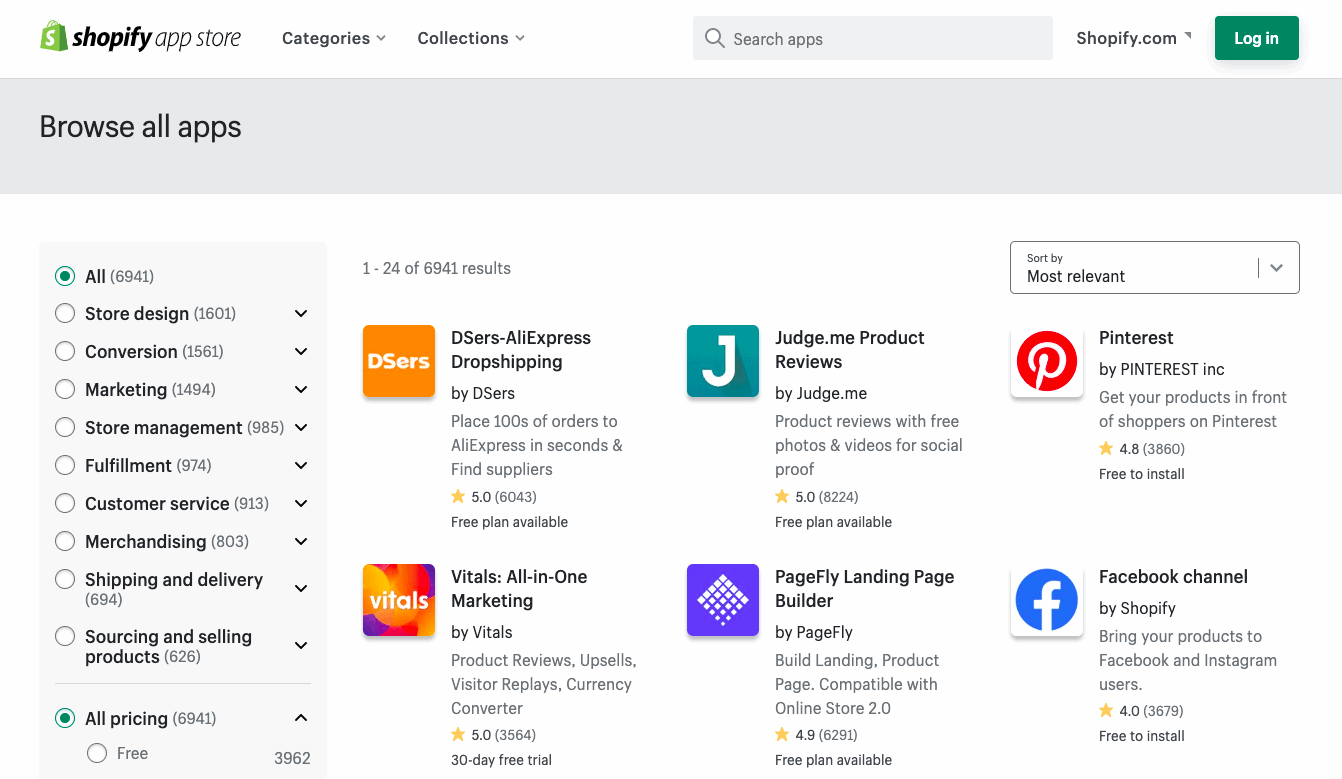
The Shopify App Market gives you access to nearly 7,000 apps
Generally speaking, website builders are also a lot simpler to manage if you need to make changes to your site on the go, as many offer their own mobile editing apps.
Of course, some website builders are easier to use than others (especially the ones that have AI-powered editing tools) while others offer more features and customization.
If budget is an important factor for you, you might also be looking for a more affordable option.
(Note that many website builders also offer free plans, but we wouldn’t advise these for a small business – you’ll have to put up with an ad banner, and won’t be able to use your own custom domain name.)
So, if you’re thinking about using a website builder to create your business website, let’s explore the different options available, and find the right one for you. (If you’d like to dig in a little deeper, we also have a full list of the best website builders for small business.)
3. Pick an affordable website builder for creating your small business website
At Tooltester, we spend a lot of time testing out website builders.
In fact, the very first version of our website was built using one (Webnode). And we have our corporate site on Wix.
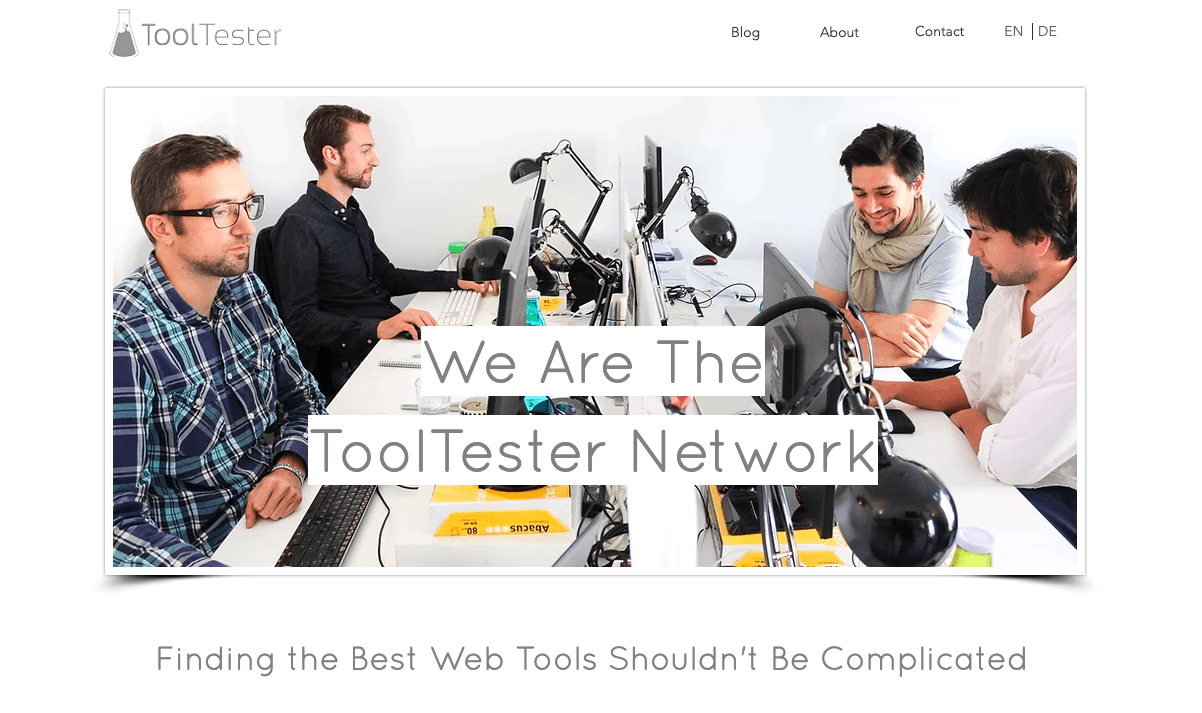
Our Wix-built corporate website
So, it’s fair to say that we’ve learned quite a bit about how to pick the right one based on your business’s needs.
We even have a rigorous testing methodology that allows us to identify each website builder’s strengths and weaknesses.
Here are our top 5 picks for creating a small business website:
- Wix – the solid all-rounder
- Squarespace – for those who are serious about content marketing
- Shopify – for all the ecommerce features you’ll ever need
- Webnode – the best solution for multilingual sites
- Weebly – budget-friendly and easy to use
Read on to learn more about each one, and when we’d recommend using them.
1. Wix
Wix is undoubtedly a name you’ve heard of already. It’s one of the most popular website builders in the market, and the one we get asked the most about.
That’s because it offers some very compelling features: an easy-to-use editor, eye-catching free templates, and even a free plan. (You can read our full Wix review to learn more.)
It’s also one of the more versatile website builders, giving you complete control over design (thanks to its flexible drag and drop builder), powerful add-ons, and an extensive App Market. It even has a tool that lets you send invoices to your client!
And if you’re completely new to website building, don’t worry – you can get a website up and running in minutes using Wix’s AI-powered site creation tool.
Wix is popular with a whole range of small businesses – online stores, restaurants, hotels, beauty salons, and more. (Just check out this impressive list of real Wix website examples.)
When to use Wix
We’d recommend using Wix for building your professional website if:
- You want to launch a small online store. Wix’s ecommerce tools are surprisingly advanced (read more about Wix’s store builder here); or
- You want an easy-to-manage restaurant site. After extensive testing, we picked Wix as the best website builder for restaurants. With the Wix Restaurants add-on, you can display menus, take online bookings, and accept orders all through your site
- You have a yoga studio, beauty salon, or fitness center, and want to accept one-on-one or group bookings. The Wix Bookings app can help you do that
- You plan to run events, in-person or online. Wix also has its own app for that, Wix Events
- Your website needs to have a professional-looking design. Wix offers over 800 modern templates that can be fully edited
- Attracting visitors via Google is important to you. Wix has some of the strongest SEO capabilities we’ve seen in a website builder
- You’d like to be able to access advanced marketing tools, like email marketing, CRM and live chat all in the same place. The Wix Ascend business suite will let you do that – and there’s even a free plan
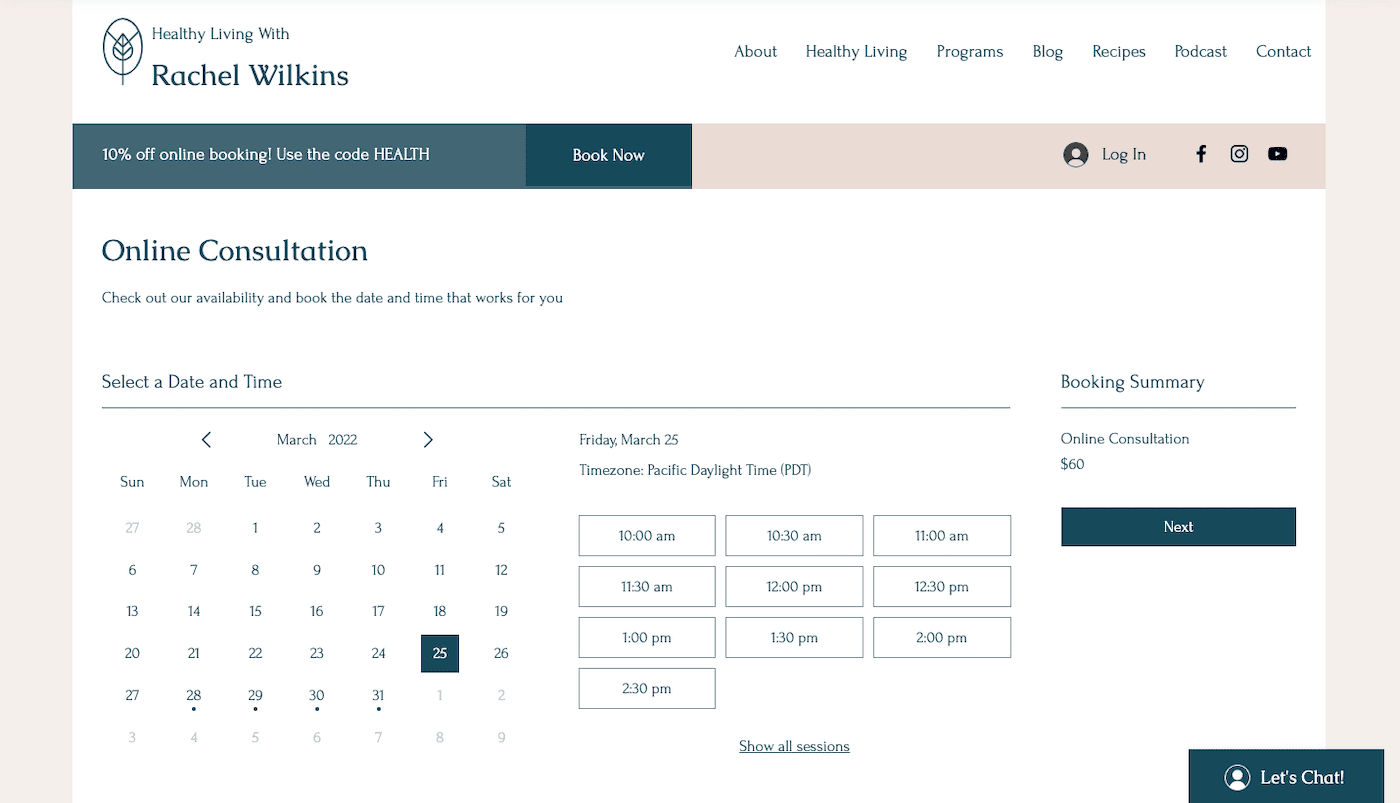
An appointment booking form powered by Wix Bookings
When not to use Wix
There are a few scenarios where Wix is not so great, particularly if:
- You want your own web pages in multiple languages. There are some SEO shortcomings for multilingual sites that make Wix less than ideal if you’re after organic traffic from search engines. Webnode would be a much better solution
- You have big plans for your online store. Shopify is a more powerful and scalable solution in the long term (compare Wix vs Shopify here).
- You’re on a tight budget. Plans start at $17, and although there is a free plan, you won’t be able to use your own domain (or get rid of the Wix ad). Weebly and Webnode are more affordable alternatives
- Blogging is going to be a key part of your marketing strategy. While Wix’s blogging tool is decent, Squarespace’s is much more flexible
- You expect to get lots of mobile traffic. Wix sites aren’t perfectly adapted to mobile devices, and can also be slower to load, which can be bad for both the user experience and SEO
Don’t think Wix is right for you? Let’s check out another popular solution…
2. Squarespace
You’d be hard-pressed to find a website builder with cooler branding than Squarespace.
With endorsements from ultra-hip celebrities, quirky Superbowl ads, and some seriously sleek website designs, Squarespace has gained a loyal following amongst artists, creatives and musicians.
For that reason, you might not immediately think of it as a website builder for small businesses.
But with features such as online scheduling (via Acuity), members-only content, and email marketing, Squarespace packs a surprisingly powerful punch.
In fact, there are plenty of small businesses using Squarespace for their site (as you can see in our list of Squarespace website examples).
When to use Squarespace
We’d recommend Squarespace for building your site if:
- You want to sell digital products, subscriptions, services, or members-only content (e.g. classes, videos). Squarespace’s ecommerce offering is impressive and allows you to sell a wide variety of products and services. Squarespace Scheduling lets you take bookings for classes and appointments, while the Member Areas add-on also allows you to offer premium content
- You want complete control over the design of your product pages. We’d say that Squarespace’s product editor is one of the best we’ve seen, letting you add around 40 different types of content to your product descriptions (e.g. videos, Instagram feeds, forms)
- You’re in a creative industry and need to showcase your work. Squarespace’s portfolio pages allow you to do this with very little effort
- You’ll be relying on search traffic to get new customers. With a first-rate blogging feature and advanced SEO tools, Squarespace is well-equipped to help you gain the search visibility you need
- Social media is important to your business. Squarespace offers integrations with Instagram, Facebook, Tumblr and more, as well as its own social content creation app, Unfold
- And, finally, having a stunning website design is a top priority. Squarespace’s templates are simply the most stylish you’ll come across in any website builder, although you’ll need to use your own high-quality imagery to make the most of them
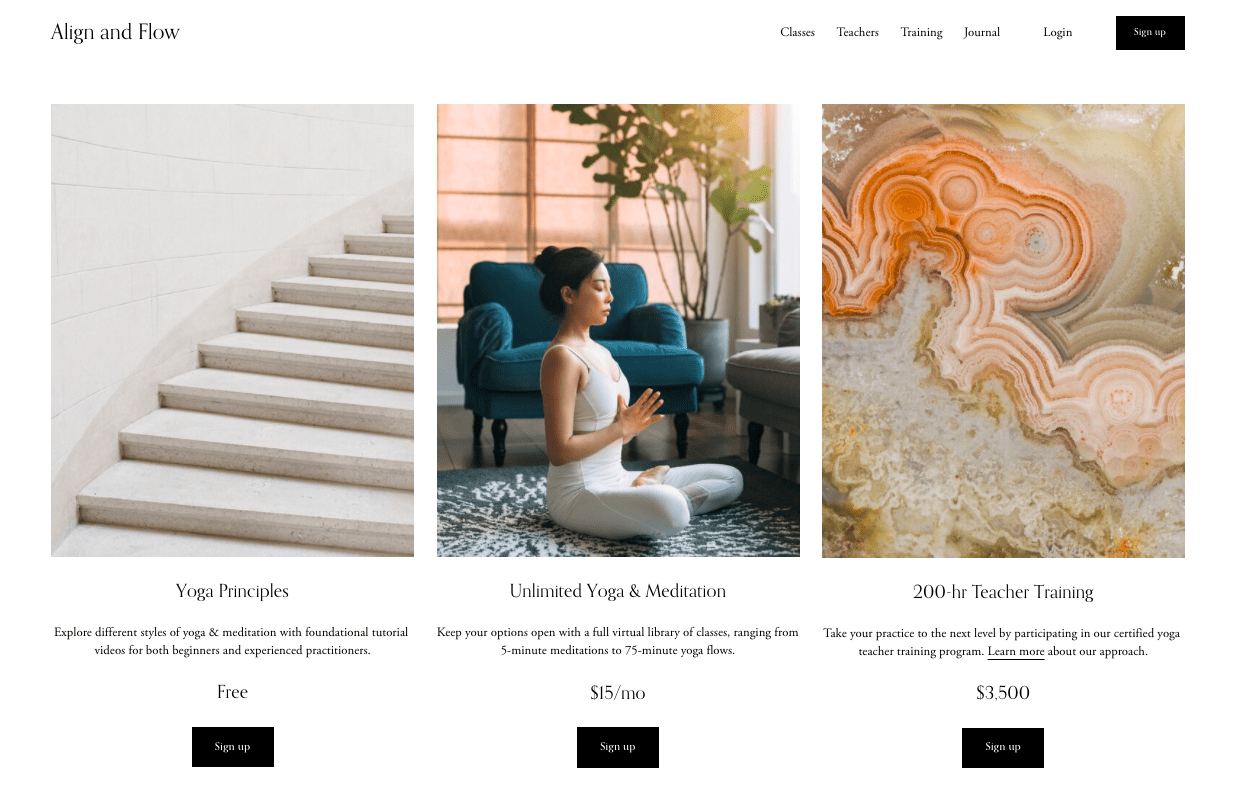
Squarespace allows you to sell premium content using its Member Areas add-on
When not to use Squarespace
But, Squarespace is not the best option if:
- You want a super simple solution. While we wouldn’t say that Squarespace is overly complicated, there are some things we’d like to see improved in the usability of the editor (there’s no autosave or site history, for example). Wix and Weebly do a better job in this respect.
- You need a multilingual site. Squarespace doesn’t offer any language switching or translation options; you’d need to add a third-party app to enable this. Again, we’d look at Webnode if you need additional languages on your site.
- You’re selling outside of the US. Ecommerce features like automatic sales taxes and carrier-calculated shipping rates are currently only available within the US. Multicurrency sites are also not supported
> Try Squarespace for free for 14 days
But, let’s say you need a more flexible solution for your online store. That takes us to our next recommendation…
3. Shopify
If you’ve been thinking about selling online, Shopify is probably one of the first names that came to mind.
As you’ve seen, it’s not the only option available to small businesses when it comes to ecommerce.
But, there’s no doubt that it’s the most popular.
Not only has Shopify been in the ecommerce game for longer than its competitors; it also offers more store-specific features than anyone else on this list.
If you need advanced options like automated sales taxes, real-time shipping rates, and access to fulfillment or dropshipping services, then you won’t find a more versatile ecommerce platform than Shopify.
It even has its own payment processing service, Shopify Payments, which gives you access to a huge range of global payment providers, and removes the Shopify transaction fee.
When to use Shopify
We’d recommend Shopify if:
- You want to make it as easy as possible for customers to buy from you. With customer-friendly features such as the Shop Pay accelerated checkout, flexible real-time shipping options, and a huge range of payment options, Shopify is focused on the one thing that matters: helping you make sales
- You also want an option that’s easy for you. Shopify’s platform is intuitive, and you’ll find most aspects of your store (website design, content updates, managing products, handling orders) simple to manage
- You’ll be selling internationally. Multilingual and multi-currency features are all baked into the platform via the Shopify Markets feature
- You’re interested in dropshipping. Shopify offers a direct integration with popular dropshipping app DSers, as well as many other dropshipping services
- You want to sell via additional online channels, such as Amazon, eBay, Instagram or Tiktok. Shopify offers direct integrations with these services so that you can sell your Shopify products on there too
- You’ll also be selling in-person (e.g. at a physical store, market stall or popup location) – Shopify POS helps you set up a point of sale that’s integrated with your online store. The basic version is even free to use
- You can snag a three-month trial for just $1 a month! This gives you the chance to really explore Shopify and kick things off without spending much.
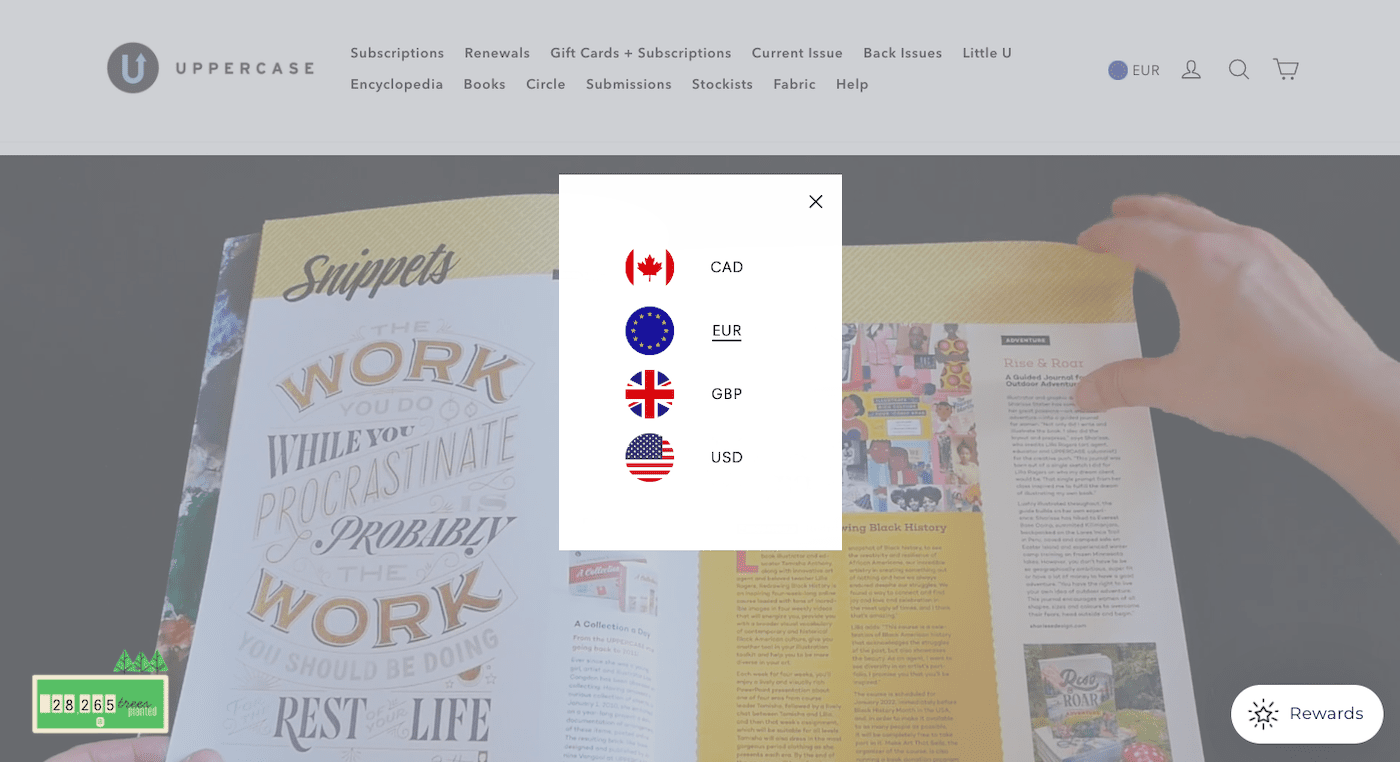
Shopify lets you sell in multiple currencies and ship to other countries, as you can see in Uppercase Magazine’s store
When not to use Shopify
However, it’s not the best option if:
- Ecommerce isn’t the primary goal of your website. Shopify’s non-ecommerce features (e.g. blog, contact page) aren’t the strongest. If this is the case, you’re better off using another website builder on this list and simply adding a shopping cart to your site
- You’re in a country where Shopify Payments isn’t available. Without it, you’ll be charged transaction fees of between 0.5% – 2% – ouch! You won’t be able to offer pricing in your customer’s local currency, either. See this list to find out if it’s available in your country
- You want the cheapest solution. If you’re bringing in a decent amount of sales, Shopify’s monthly subscription fee is manageable, but many smaller businesses might find the $29/month starting price a bit hard to swallow.
> Try Shopify for free for 3 days
If Shopify’s pricing is a little too steep, or you’re not interested in opening an online store, you might want to check out this next solution.
4. Webnode
While it may not be as well-known as the other tools on our list, Webnode’s customer base of around 40 million users shows that it’s not doing too badly in the website builder market.
As I mentioned earlier, we actually used it to build the original version of the Tooltester website, many years ago.
Back then, we appreciated its ease of use and simplicity.
And, while we now use WordPress (our site has grown considerably in the last few years!), we can still see the perks of using Webnode if you’re looking for a decently-featured yet affordable solution.
Highlights include: a free plan, business-specific website templates, an easy-to-use visual editor, and free professional email addresses (which is a huge differentiator).
When to use Webnode
We’d recommend Webnode if:
- You have a multilingual audience. Webnode has one of the best multilingual features we’ve seen, letting you easily add translations and a language switcher to your site.
- You’re selling internationally. Like the multi-language feature, Webnode also allows visitors to switch between currencies. You can choose whether you want to simply display prices in local currencies, or charge customers in them too
- Your top priority is keeping costs down. With ad-free plans starting at $12.90/month, it’s much more affordable than some of its bigger-name competitors. The free email accounts can also save you a small fortune, especially on the higher-level plans
- You only need a simple website, for example, if you only plan to have a couple of pages and not too much content. Webnode’s user-friendliness and low prices make it a logical option for a basic site

Switching languages on a Webnode site
When not to use Webnode
Webnode is not ideal if:
- You need advanced ecommerce features. Webnode doesn’t let you sell digital products, or give you access to real-time shipping rates and automated taxes, so if you need these features Shopify is your best bet.
- You want to be able to add extra functionality to your site. For example, the blog editor has some limitations (for a comparable price, Weebly’s blogging tool is much better). And the lack of an app store means that adding in advanced features like live chat or a booking system requires a subscription to a third-party service. Wix and Squarespace do a better job of this.
- You want a design that stands out. Webnode’s templates are fine, but the range is limited and the quality isn’t as high as what you’d find with Wix or Squarespace. You are also more restricted in the customizations you can make as the editor is more rigid, and you don’t have access to the source code, either.
5. Weebly
Time for a confession: we actually used to like Weebly a lot more than we do now. (See why in our Weebly review.)
Since being acquired by Square, we haven’t seen too many updates being made to the platform. Instead, all the love seems to be going to Square Online, which focuses entirely on ecommerce (and is not the platform we’re reviewing here).
So, why are they even on this list?
Because, the features we used to love about Weebly are still there: a solid blogging tool, easy-to-use editor, membership sites, and very affordable pricing.
But, while it may still be fine for a smaller website, businesses with bigger ambitions might soon find themselves quickly outgrowing it.
When to use Weebly
With all that in mind, we’d recommend Weebly if:
- You want a small, simple website that’s good value for money. Weebly’s editor is extremely user-friendly, and so are the prices – ad-free plans start at $12. If all you want is a website to display some company information and contact details, Weebly will do just fine
- You don’t plan on making too many changes to it in the future. While Weebly is still providing support for this product, it doesn’t look like it’s actively working on adding in new features
- You’d like to add a blog to your site. With a drag-and-drop editor and inbuilt commenting functionality, Weebly’s blog editor is easy to use, flexible and ready-to-go
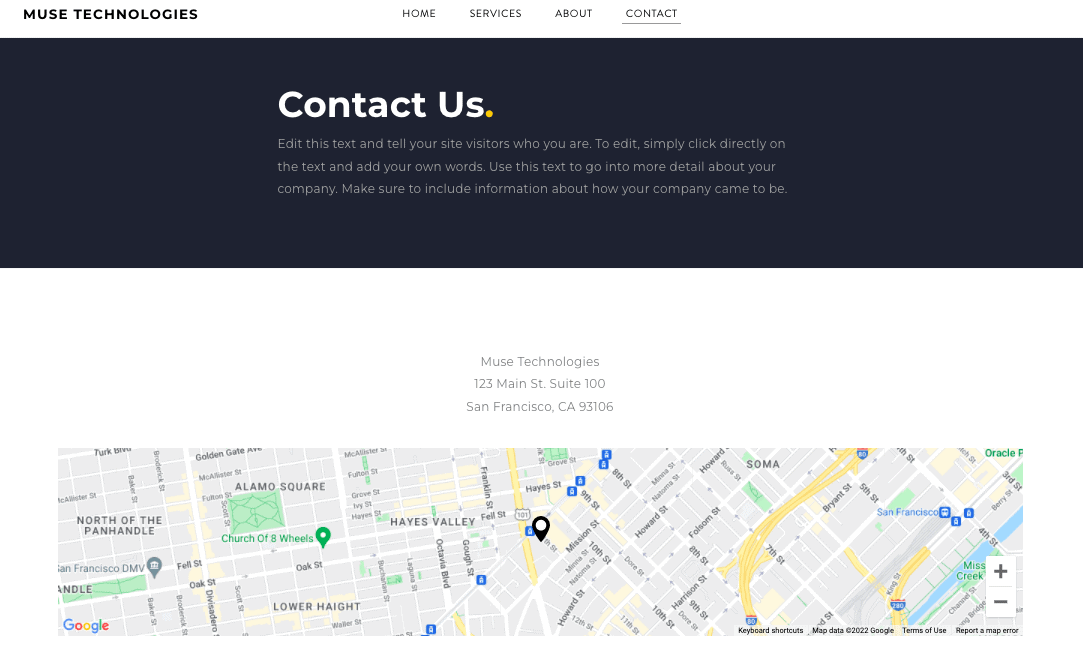
An example of a Weebly contact page with embedded Google Map
When not to use Weebly
But, we’d steer of Weebly clear if:
- You want a feature-rich site. While you do get access to Weebly’s App Center, the sheer fact that Weebly isn’t really updating the platform makes us wonder how much longer these integrations will be supported.
- You want to sell products online. It’d be better to use the more regularly-updated Square Online editor instead (or one of the other ecommerce website builders on this list). Weebly’s customer login feature is also incompatible with its website membership features, which is inconvenient if you want both an online store and member-exclusive content
So now you’ve seen some of the best website builders available to small businesses.
Hopefully, you have a few ideas about which might be best for your website.
You might even be interested in trying a few of them out – we’d definitely encourage you to do that! (In the links we’ve provided above, you can test all of them out for free).
But, before you hit the ‘Publish’ button, there are a few other things to consider…
4. Design your small business website
You’re (probably) not a web designer.
You might have dabbled with Photoshop or similar in the past, but that doesn’t mean you’re comfortable with the idea of designing a whole new site from scratch!
Thankfully, one of the great things about website builders is that most of the design is taken care of for you.
All of the website builders on our list let you start with a template, which you can adapt to meet your preferred style or branding.
Most of the templates are free. In fact, Shopify is the only platform whose themes aren’t all free. (Although they still have a handful of stylish-looking free themes that do a great job.)
Most are also mobile-responsive by default, meaning that they’ll look great on any device. (Wix is the only exception here; some of their website templates need a little bit of extra tweaking to display well on mobile.)
If you choose a template within your business’s category, you’ll also find that it already comes with many of the features you need.
For example, choosing from one of the ‘Restaurant’ templates in Wix will give you a site that includes a ‘Menu’ page, ‘Reservations’ feature and ‘Online Orders’ function (which is powered by Wix).
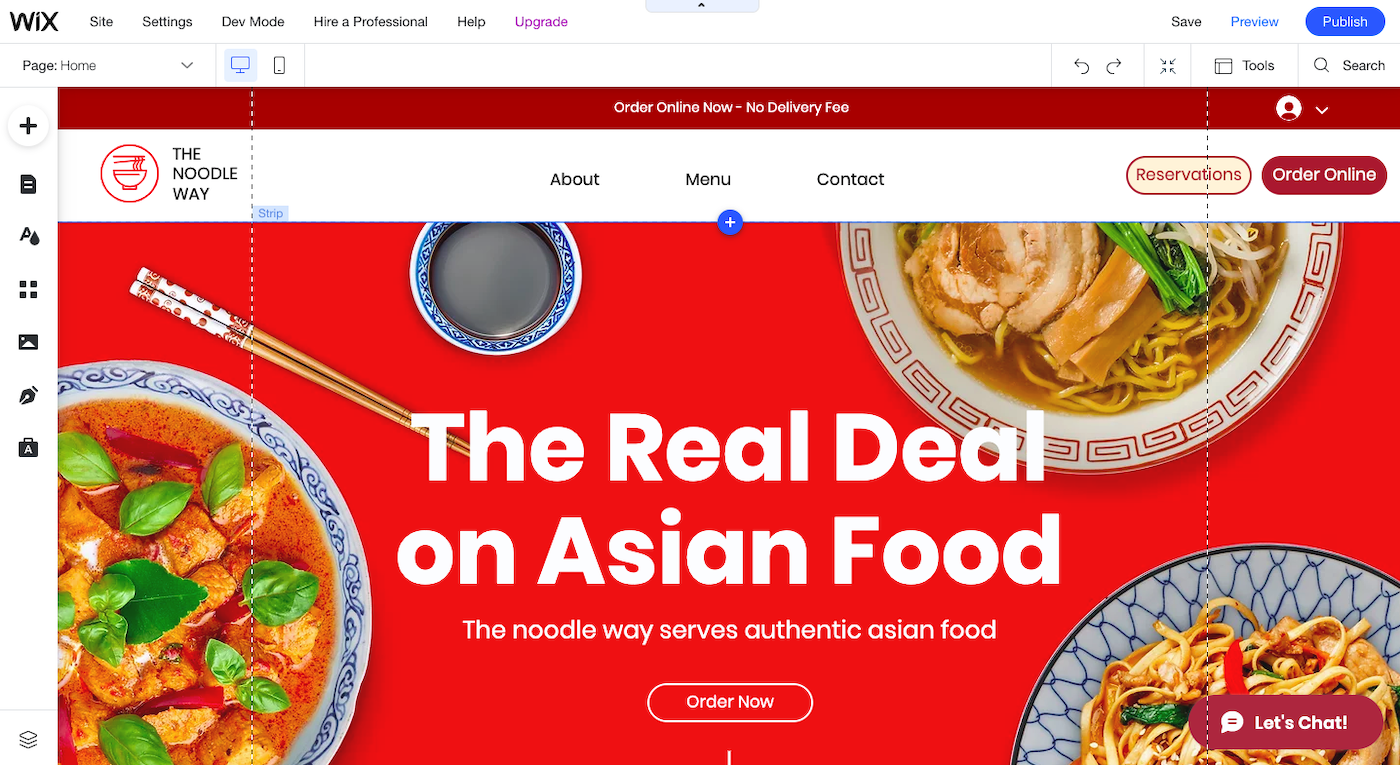
Menu page, reservations and online ordering are all included in this Wix restaurant template by default
Other elements you’ll be able to customize within each template include:
- Colors
- Fonts
- Layouts
- Images
- Text
- Animations and interactions
As each website builder (mostly) uses a visual editor, you’ll also find that making edits are fairly easy to do.
It usually takes a bit of practice, but if you know your way around a Google Doc or Word editor, you’ll probably get the hang of it pretty quickly.
We’ve even put together the following tutorials if you need a bit of extra help:
And, of course, each website builder offers their own customer support service – usually in the form of a knowledge base/help center, plus customer support (via chat, email or phone).
Note – if you need a more general guide to designing your site, check out our tips on designing and planning a website.
5. Optimize your site for Google (SEO)
Despite what you might hear online or anywhere else, search engine optimization isn’t easy.
Getting good rankings on Google (or any other search engine) isn’t as simple as just sticking a few keywords on your site and hoping for the best.
In fact, even if you do everything right, there’s still no guarantee it will work.
But, if getting more traffic through Google could make a huge difference to your business’s success, it’s absolutely worth a shot. Why are we only talking about Google you wonder? Well, it’s by far the most popular search engine with the biggest traffic potential for your website.
In a nutshell, optimizing your site for search involves:
- Choosing relevant, highly-searched but low-competition keywords (this will take research using tools like Google Trends and Ahrefs to identify them)
- Creating good content around those keywords (blogs, pages, etc.)
- Doing a few ‘geeky’ things in the backend (such as including those keywords in page titles, descriptions, alt texts, etc., and making sure that pages don’t load slowly); and
- Getting links from other reputable sites back to yours
Some of the website builders on our list (e.g. Wix) have built-in tools to help you with the first two tasks. All of them will let you do #3.
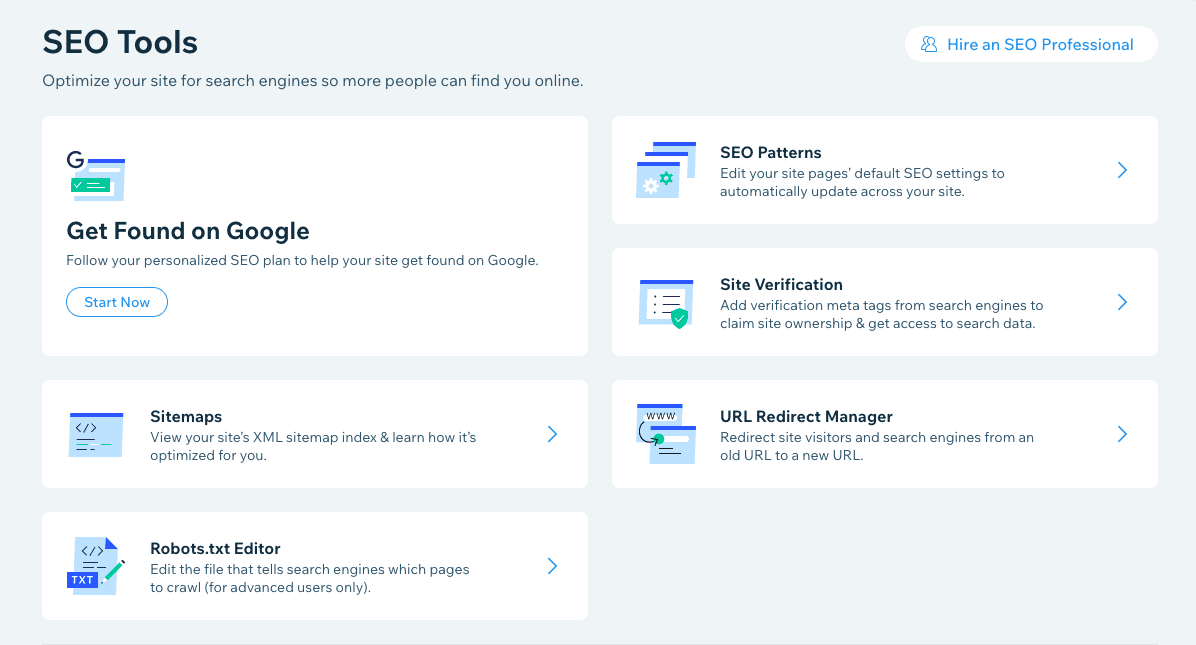
Wix’s SEO Tools
But, #4 is a little more challenging.
In an ideal world, people would link back to your content simply because it’s interesting and relevant.
But the reality is that getting good backlinks almost always requires a little bit of legwork (read: outreach). What usually works best is asking your direct contacts (customers, suppliers, partners) for a link to your website.
Just be aware that there are a lot of ‘black hat’ SEO tactics that Google will actually penalize you for (for example, buying links is a big no-no).
So, if SEO is an avenue you want to pursue, you’ll need to do a bit of research and figure out the best strategy for your website.
For more information, check out our guide on SEO for website builders.
6. Consider everything you need for your website to go live
Of course, there’s so much more to a website than what the visitor can see and do on it.
There’s usually a lot going on in the background that’s just as important.
So, let’s take a look at the other things needed to make a website really work for your business.
Domain name
A domain name is the web address where people can find your website (ours, for example, is tooltester.com).
When you first sign up for any of the website builders above, you’ll actually get your own free domain name, hosted on the website builder’s domain (e.g. yoursite.wix.com, yourstore.myshopify.com).
These are okay to use while you’re still building your website, for example, to test out how your site looks on mobile devices.
But, by the time your site is ready for the world to see, you would ideally be using your own custom domain name (e.g. yourbusinessname.com, yourbusinessname.co.uk).
That’s because businesses using their own domains:
- Simply look more professional;
- Are easier for visitors to remember (and therefore to type in); and
- Achieve higher rankings in Google – especially if their domain includes a search-optimized keyword (more on that below)
The downside is that domain names come at an extra cost. And, the more popular a domain name is likely to be, the more expensive it will be.
But, don’t panic – you can still get a decent domain name from domain registrars like Namecheap for around $9-18/year.
And many of the site builders on our list include a free domain name in the first year (with slightly higher prices thereafter – which some might say are worth it, given that you don’t have to deal with an additional company).
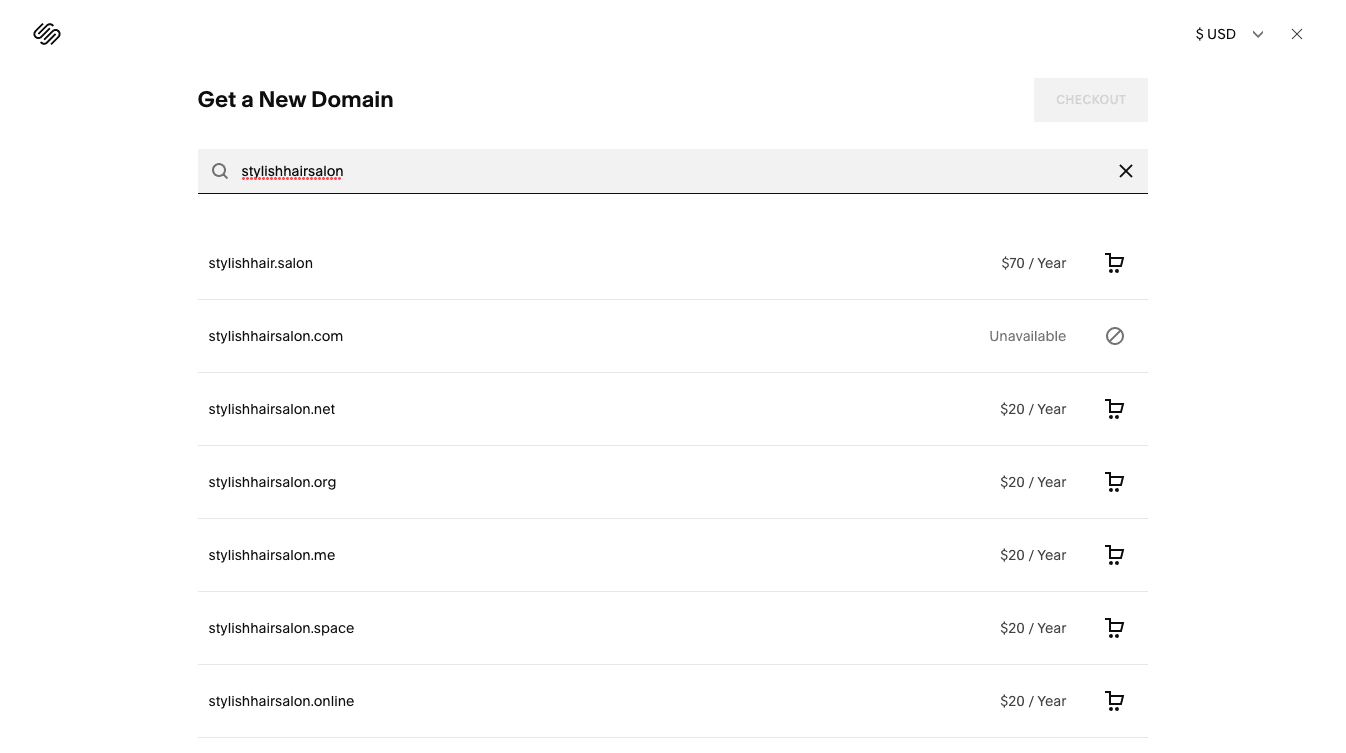
Purchasing a domain name through Squarespace
So, what should you choose for your domain name?
For many businesses, the most obvious choice would be the business name itself, plus the extension of the country you’re based in (for example, rad-ramen.com.au for a restaurant located in Melbourne, Australia).
But, if you find your #1 choice already taken (or out of budget – something we know a thing or two about!), then you could also explore using alternative extensions.
These are also called ‘top-level domains’ or ‘TLDs’. Options include .net, .biz, and even industry-specific TLDs like .tech, .bike or .coffee.
Or, you could do something a little different – something that could actually help to get you more business.
If you want visitors to find your business on Google, you could use a relevant keyword (that is, the keyword that you want people to find you on when they search for it on Google) as your domain name.
Here’s a real-life example. Boston Blossoms is a florist that’s been delivering flowers across Boston for 30 years.
But, in addition to having the website bostonblossoms.net, you’ll also be able to find them on the following URL: bostonflowers.org
This domain is perfectly optimized for the keyword ‘boston flowers’, which is what Bostonians would likely be searching for in Google when they’re looking for a florist in the local area.
And, sure enough, when you search for ‘boston flowers’ in Google, they’re one of the first results that come up.
So, don’t necessarily limit yourself to a domain that’s just your business name. Think about a domain that would make sense to your potential customers, too.
Professional email addresses
Hand-in-hand with domain names come email addresses. Once you’ve settled on a domain name, you’ll want to set up email accounts at this same domain too (e.g. [email protected]).
Again, these look much more professional than using a free mailbox or a personal address. (Because who wants to buy from [email protected], or [email protected]??)
So where can you get a professional email address from?
Many of the website builders we’ve mentioned – Wix and Squarespace for example – give you the option to purchase mailboxes through them. However, these are usually hosted with an external service (e.g. Google Workspace).
Note that while Google Workspace is an excellent business product (and comes with a lot more than just email), it’s not the most budget-friendly option – plans start at $6/user/month. However, it works well if you manage multiple employees where everyone needs an email address and you want to be able to centrally manage it.
If you’ve purchased your domain from another provider (e.g. Namecheap, GoDaddy), you’ll also be able to purchase mailboxes directly from them. This usually works out much cheaper than purchasing through a website builder or Google Workspace.
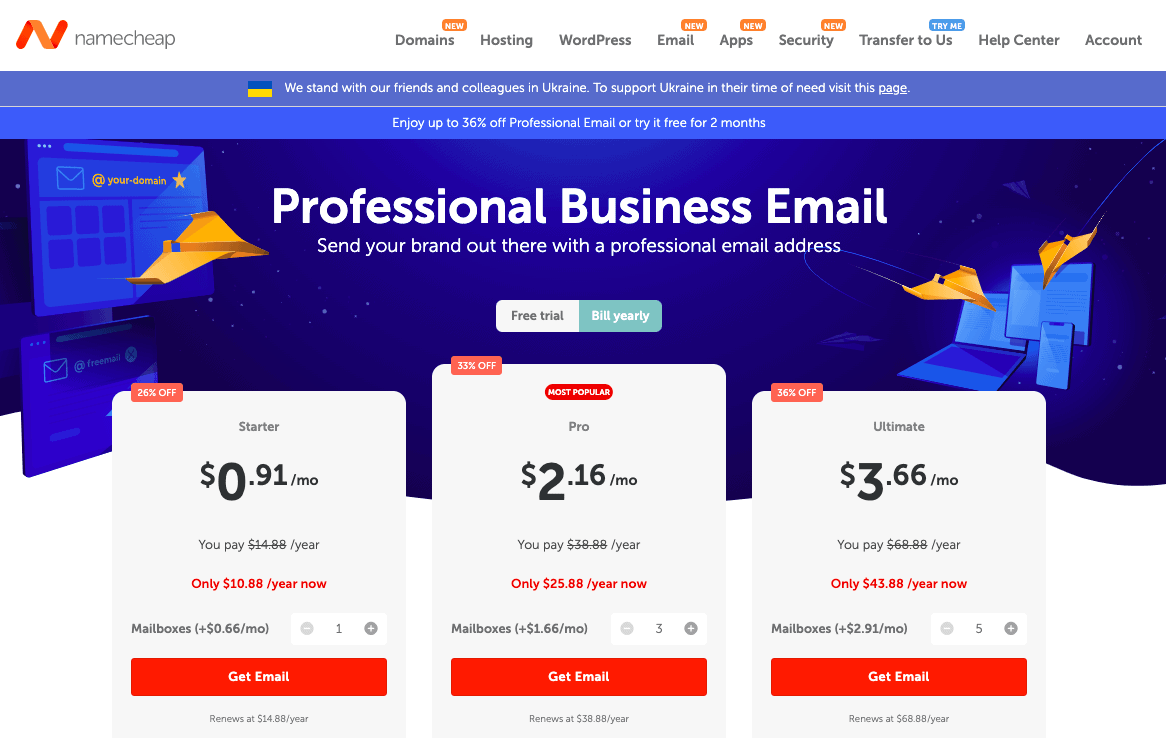
You can get a much better deal by purchasing your emails from Namecheap
In fact, you can purchase mailboxes from these external providers even if your domain is provided through your website builder. You’ll be able to connect the two services after you’ve purchased them. From our experience, Namecheap’s customer support is usually very helpful with this.
There’s another option, too. While most website builders provide email accounts at an additional cost, Webnode actually includes them for free in most of their plans. The Standard plan includes 20 email accounts, while the Business plan includes a whopping 1,000!
So, if you’re looking to save a few dollars, Webnode is worth checking out.
Team Management
You might be flying solo today. But that doesn’t mean you always will be.
Maybe you’re thinking about expanding your team in the near future. Or, maybe you already have a few team members on board.
Either way, it’s likely that you’ll need to be giving others access to your site at some point – whether that’s to contribute to blog articles, edit site content, or even have full administrative control.
But, you also want to make sure that you don’t give them the wrong permissions (because you definitely don’t need to give your guest blogger access to your billing and payment information!).
So, you’ll need to find a website builder that meets your team management needs.
Wix, for example, gives you a wide range of options when it comes to roles and permissions. You can invite team members to join your site and assign them one or multiple roles – giving them access to a variety of general, billing, marketing, blog and payments features.
You can even create custom roles, and also create Teams, which gives them access to multiple Wix sites (if you have more than one).
Shopify’s permissions are equally as granular, focusing more on store-related functions (orders, discounts, gift cards etc). And Squarespace and Weebly offer similar levels of access, although their list of roles is a little more simplistic (but perhaps easier to manage):
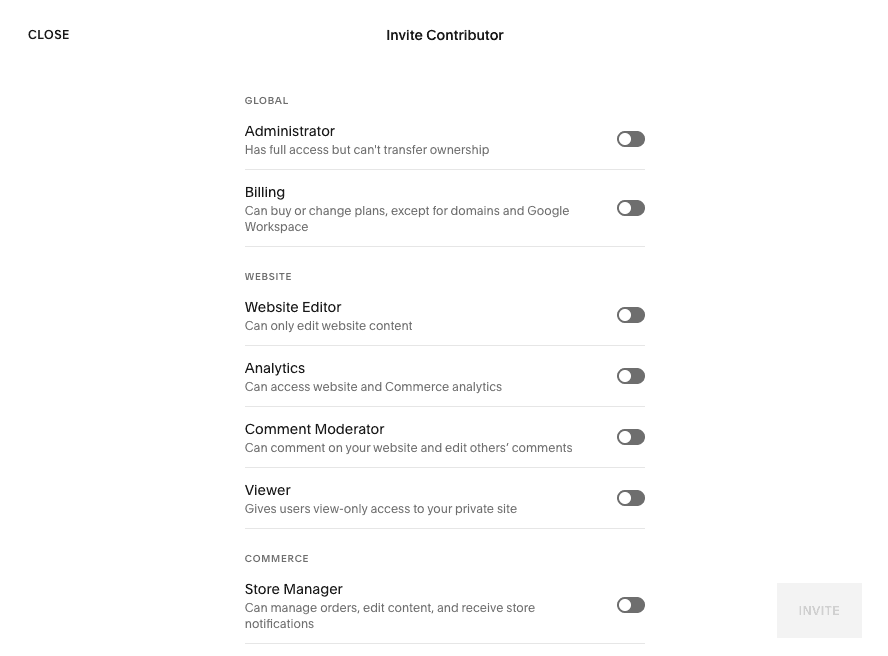
Managing permissions in Squarespace
Webnode’s permissions are the least flexible, giving you the option of assigning Administration or Editor roles only, but this may be enough for you if your site is on the simple side.
Email Marketing and Customer Relationship Management
Many small businesses rely on email marketing to gain new customers and encourage repeat business, using platforms like ActiveCampaign or Mailerlite.
These can easily be integrated into any website (either through an app or by embedding a piece of code).
That means that anybody who signs up to your newsletter on your website will automatically be entered into your email marketing database.
Similarly, many of these email marketing platforms also allow you to automate email programs. For example, you can send an automated sequence of emails to somebody who abandons their shopping cart, or visits a specific page on your website (ActiveCampaign and GetResponse are two of the more powerful automation services).
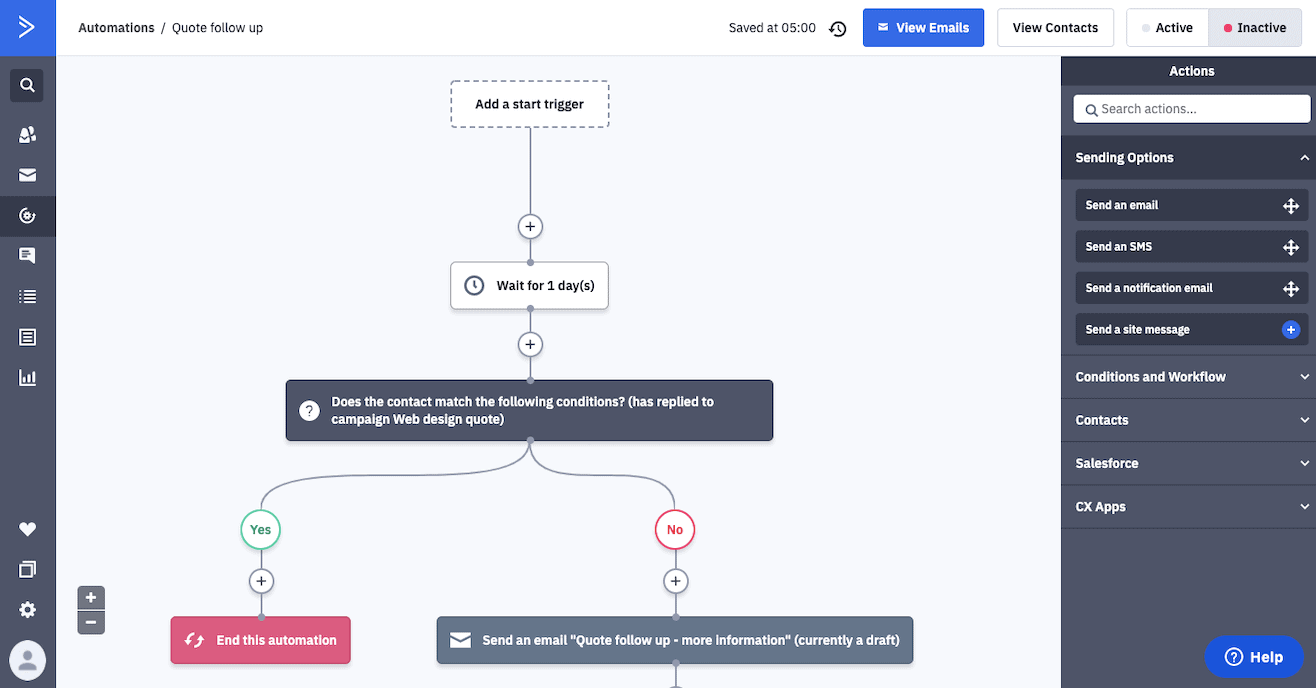
An automated email program in ActiveCampaign
If your small business typically follows a longer, more complex sales process, you may also want to explore Customer Relationship Management (CRM) software to help you manage your sales pipelines.
Note that Wix actually offers email marketing and a basic CRM through its Ascend business suite, which could be a good option if you’re thinking about going with Wix.
We delve into the topic of email marketing in much greater detail on our sister site, so feel free to check it out if you’d like to learn more!
Analytics
The final piece of the puzzle is your website’s analytics – that is, being able to see how much traffic you get to your site, and understanding where visitors go, and where they drop off.
If you have an online store, you’ll also want to know which products are the most successful, and which need a little bit of extra marketing push.
It’s the only way to truly know how successful your site is in achieving its goals.
The great news is that all the website builders on our list include website analytics (although some include more comprehensive reports than others). These include standard reports such as:
- Daily visitors to the site
- Traffic sources (e.g. Google, social media, email, or someone typing in the URL directly)
- Which pages were visited
- Which keywords they used to find your site
- Which devices they were browsing on (e.g. mobile, desktop)
- Sales made (units sold, total revenue etc)
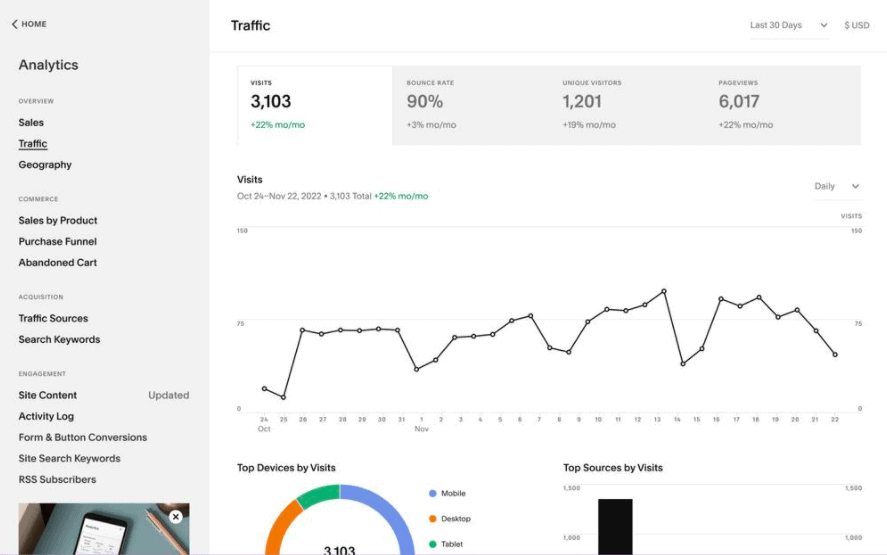
Squarespace’s Analytics dashboard
Many (such as Squarespace, Wix and Shopify) take it further, drilling into statistics such as:
- Bounce rate (how many visitors left your site as soon as they landed)
- Which country visitors are located in
- Abandoned cart rates
- Conversion rates (e.g. contact form submissions and button clicks)
Wix even has a unique ‘Insights’ feature that tells you specifically which areas of the site you should be paying attention to:
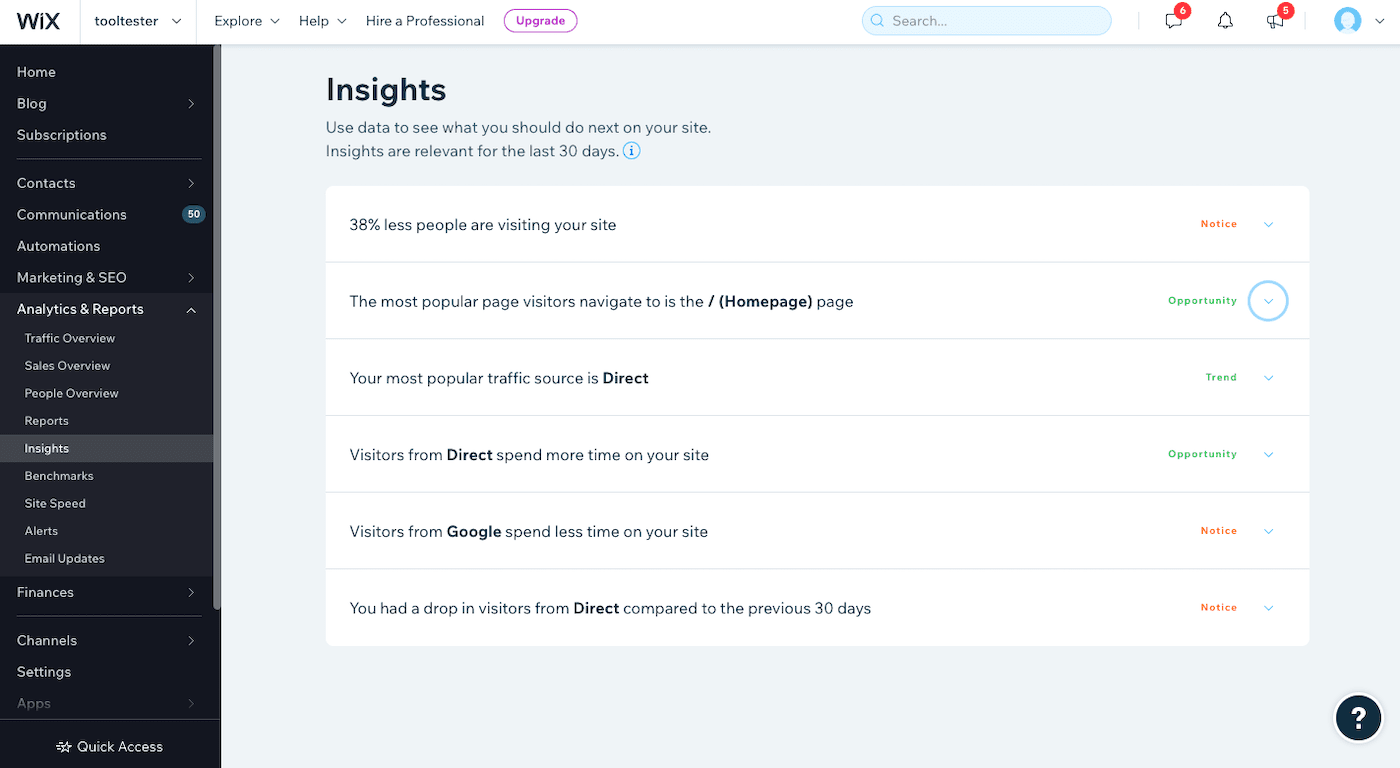
Finally, it’s worth noting that each website builder also allows you to integrate with Google Analytics, adding a further layer of insight into your site’s performance. Keep in mind that the advantage of an external analytics tool (like Google Analytics) is that you can move your site to a new platform without losing any of the stats.
7. Cover your legal bases – and go live!
We’ll make this section short and sweet, because it’s not exactly the most exciting part of launching your site (and we’re not legal experts either).
But it is important to be aware of any legal considerations that may apply.
Assuming you’ve already registered your business according to your local laws, the things you need to do on your website are:
- Publish a Privacy Policy: Regulations vary across the world, but generally speaking, you need to have a page on your site stating your privacy policy. The content generally includes details around what information you gather and how you share it; how users can see the information they gave you and change it; your policy’s date, description and updates.
- State clear Terms and Conditions: This is another page that details information on what users must do and mustn’t do. It will generally include: important keywords, user rights and responsibilities, use of the website etc. It’s not always required by law, but it can limit your liability if a visitor takes you to court and is especially relevant if you are selling products or services on your site.
Once you’ve checked these boxes, you’re all set! Hit ‘Publish’ and see all your hard work finally pay off!
Create a small business website: Final thoughts
So, now you know everything you need to know to create your small business website!
Once you’ve launched your site, just remember to continue promoting and optimizing it, in order to get the most out of it.
Some of the things we’d recommend doing on a regular basis are:
- Updating your website: If you’re relying on SEO, adding new content regularly (e.g. blog articles) is a must. You should also make sure to update content for accuracy, e.g. address changes, updates to products. Read our guide on how to improve a website for more practical tips on updating your site.
- Optimizing your site for search: This is an ongoing process and requires time and work. Check out this guide for more information. (Be sure to also register with Google Search Console and notify them that your website exists.)
- Keep an eye on your analytics: To understand how your site is performing and whether it’s meeting your goals, keep a close eye on its statistics using Google Analytics and your built-in reporting tools.
- Email marketing: Many businesses view this as a crucial part of their online marketing strategy. The great news is that this can easily be integrated with your website. Read more in our guide to creating email newsletters.
- Social media: Finally, many websites also link to their social media profiles (on Facebook, Twitter, Instagram, LinkedIn etc), and cross-promote content between the two different channels.
> Still need help finding the right website builder for your site? Check out our guide on choosing the best website builder for small business
Do you have any questions you’d like to ask about creating a small business website? Ask us in the comments below.
THE BEHIND THE SCENES OF THIS BLOG
This article has been written and researched following a precise methodology.
Our methodology